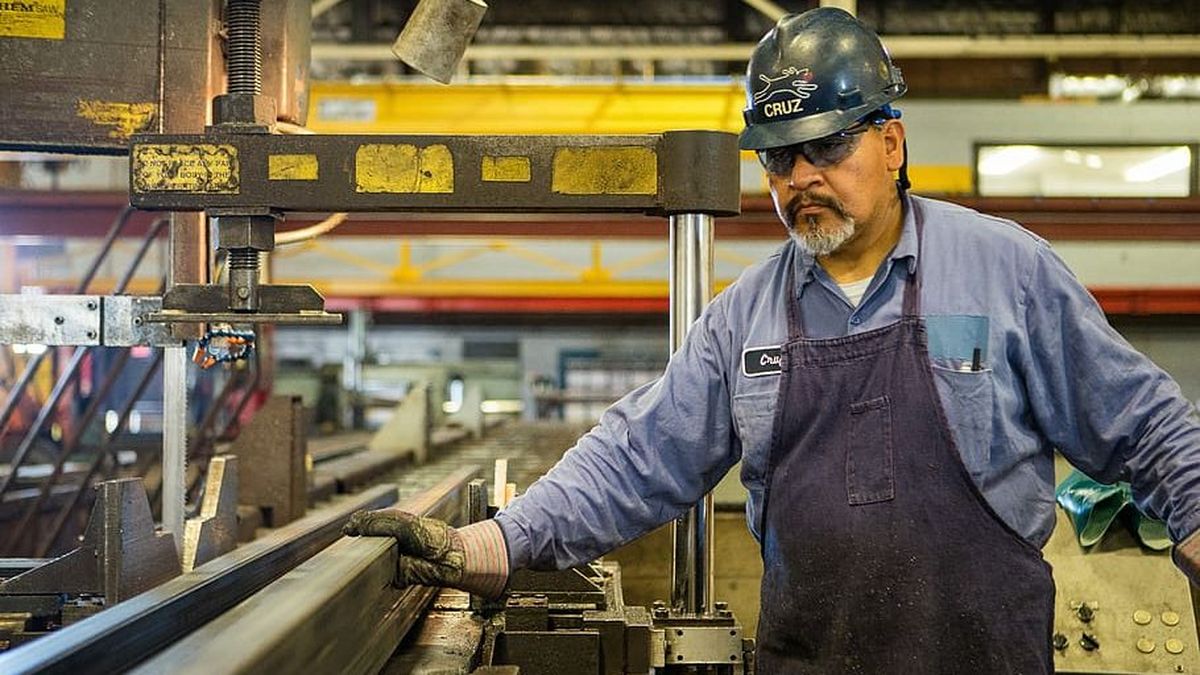“Employment and production are the strong points of the economic management of this Government. Based on effective protection of the internal market and some favorable macroeconomic conditions, the Fernández administration will close with higher GDP per capita and private employment than at the beginning of the Government”, the Sarandí consulting firm analyzed in this regard. And it was clarified: “The balance of salaries will be different, which very possibly will consolidate a new downward cycle, although less pronounced than in the previous four-year period.”
“This year’s inflationary acceleration completely swept away the previous cushion and increased the heterogeneity of income by activity and contractual modality. The conjunction of the highest levels of employment with low wages (in purchasing power) once again put the figure of ‘poor workers’ on the scene, which is not new in Argentine economic history, but was a very remote figure”, highlighted the study.
In this sense, from Sarandí they highlighted that the recovery of employment during the management of the current Government is uneven depending on the type in question: for example, since December 2019 the number of monotributistas increased 21%, well above employment in the public sector, which grew by 5% and the number of private wage earners, which climbed 3.8%. “This confirms the deepening of the secular ‘monotributization’ of the labor market, a characteristic feature after years of de facto precariousness,” they analyzed from the firm.
In detail, construction stands out as the main job creation sector in the last three years with a growth of 10.6%. This is followed by business activities (8.1%), industry (7.3%) and commerce (5.2%).
Salaries, the other side
Beyond this job recovery, wages fail to regain purchasing power. In fact, according to the report prepared by LCG based on the latest data released by INDEC, for September of this year “the general level of wages accumulates a real fall of 3.1%” compared to December 2021. “It is a average that hides wide differences within: contractions of 9.8% in the case of unregistered salaries, 2% for public salaries and barely 0.4% for registered private salaries”, they highlighted.
“The purchasing power of wages accumulates a cut of 23.3% compared to November 2017, the last ceiling,” they pointed out from LCG, and projected that for this year “a loss of purchasing power of around 0.5% could be expected” .
“Since the end of 2021, the inflationary acceleration wreaked havoc and gradually devoured the previous improvement. The accumulated since the end of 2019 shows a decrease of 3%. The trajectory of the purchasing power of wages depends centrally on the quality of the macro”, they added from Sarandí, and detailed inflation and the devaluation rate as determining factors in this regard.
“Looking ahead, it is expected that the rate of growth in employment will be sustained in the remaining year, despite the slowdown due to the slowdown in the rate of increase in productive activity. More uncertain is the future in the short term for wages”, they pointed out from the consultancy.
In this scenario, Fundación Capital analyzed the fact that more and more workers fall below the poverty line. “The phenomenon of poor workers has been growing in recent years, reaching 17.9% of formal wage earners and 45.2% of informal workers (+6.7 pp since 2017 and +11.4 pp, respectively ), as a result of the deterioration in real wages and the low quality of the new jobs”, they highlighted from the firm.
“Within a framework of inflation at a higher level, next year will hardly result in an improvement in these indicators. Indeed, a large part of this phenomenon is due to the sharp drop in the purchasing power of wages in the last five years (-19.2% formal and -34.7% informal since 2017), anticipating that this dynamic continue in 2023. In fact, even in the best scenario, the real salary of workers would decrease by 2.9% yoy, remaining 24.6% below 2017”, they detailed.
Thus, they remarked that “in a context of continuous decline in the purchasing power of wages and low-quality job creation, having a job does not guarantee being above the poverty line, with 1.5 million wage earners registered who do not cover a Total Basic Basket for their families”. “Going forward, in line with mediocre activity in 2023, consolidated inflation at a higher level and a high level of uncertainty, the dynamics of the labor market will continue to deteriorate, with wages that will not win the race against prices and the job creation of very deteriorated quality”, they concluded from Fundación Capital.
Source: Ambito
David William is a talented author who has made a name for himself in the world of writing. He is a professional author who writes on a wide range of topics, from general interest to opinion news. David is currently working as a writer at 24 hours worlds where he brings his unique perspective and in-depth research to his articles, making them both informative and engaging.




